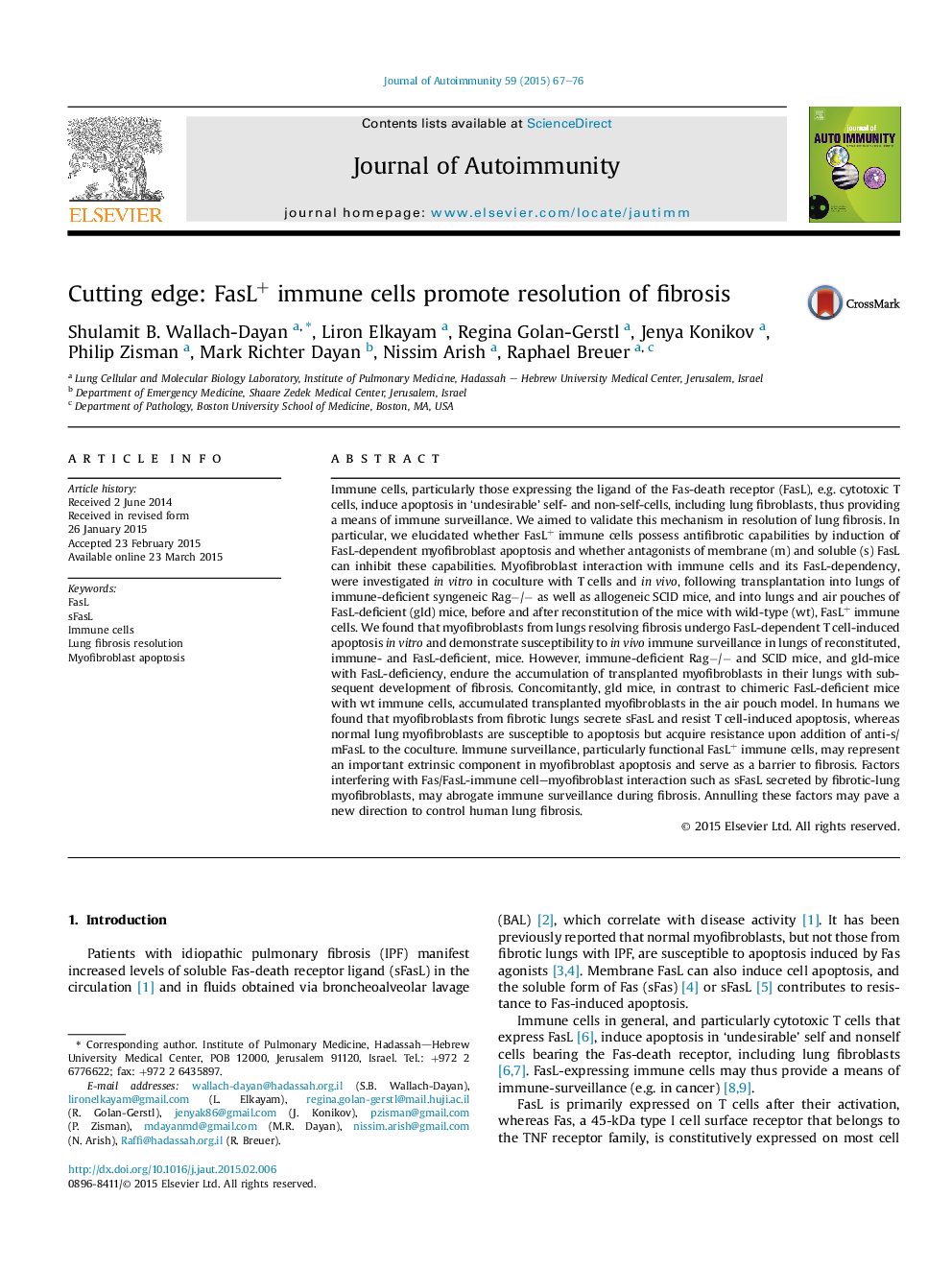| Article ID | Journal | Published Year | Pages | File Type |
|---|---|---|---|---|
| 3367726 | Journal of Autoimmunity | 2015 | 10 Pages |
•Murine myofibroblasts undergo T cell-induced apoptosis during resolution of fibrosis.•Fibrosis evolves in immune-deficient mice; their reconstitution attenuates fibrosis.•Fibrosis attenuation is mediated by Fas-Ligand (FasL+) T cell-induced apoptosis.•Human IPF lung-myofibroblasts resist T cell-induced apoptosis and secrete soluble FasL.•Soluble FasL may mediate fibroblast survival in IPF.
Immune cells, particularly those expressing the ligand of the Fas-death receptor (FasL), e.g. cytotoxic T cells, induce apoptosis in ‘undesirable’ self- and non-self-cells, including lung fibroblasts, thus providing a means of immune surveillance. We aimed to validate this mechanism in resolution of lung fibrosis. In particular, we elucidated whether FasL+ immune cells possess antifibrotic capabilities by induction of FasL-dependent myofibroblast apoptosis and whether antagonists of membrane (m) and soluble (s) FasL can inhibit these capabilities. Myofibroblast interaction with immune cells and its FasL-dependency, were investigated in vitro in coculture with T cells and in vivo, following transplantation into lungs of immune-deficient syngeneic Rag−/− as well as allogeneic SCID mice, and into lungs and air pouches of FasL-deficient (gld) mice, before and after reconstitution of the mice with wild-type (wt), FasL+ immune cells. We found that myofibroblasts from lungs resolving fibrosis undergo FasL-dependent T cell-induced apoptosis in vitro and demonstrate susceptibility to in vivo immune surveillance in lungs of reconstituted, immune- and FasL-deficient, mice. However, immune-deficient Rag−/− and SCID mice, and gld-mice with FasL-deficiency, endure the accumulation of transplanted myofibroblasts in their lungs with subsequent development of fibrosis. Concomitantly, gld mice, in contrast to chimeric FasL-deficient mice with wt immune cells, accumulated transplanted myofibroblasts in the air pouch model. In humans we found that myofibroblasts from fibrotic lungs secrete sFasL and resist T cell-induced apoptosis, whereas normal lung myofibroblasts are susceptible to apoptosis but acquire resistance upon addition of anti-s/mFasL to the coculture. Immune surveillance, particularly functional FasL+ immune cells, may represent an important extrinsic component in myofibroblast apoptosis and serve as a barrier to fibrosis. Factors interfering with Fas/FasL-immune cell–myofibroblast interaction such as sFasL secreted by fibrotic-lung myofibroblasts, may abrogate immune surveillance during fibrosis. Annulling these factors may pave a new direction to control human lung fibrosis.
